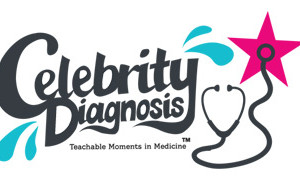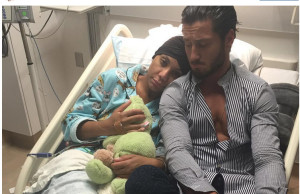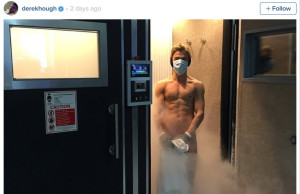Rehearsal Hurts Ricki’s Ribs on DWTS

Imagine, if you would, a maiden in a hooded red cape. Looking strong and confident as she takes on a fierce creature in a defiant paso doble.
If you can, you were probably watching Dancing with the Stars last night.
Talk show host and actress Ricki Lake and her professional partner Derek Hough were put back at the top of the leader board with 27 points for their near-perfect dance. They did this despite Lake’s injury earlier in the week. As she put it:
I did something to my ribs sometime in rehearsal last week, so I just want to get it checked out, to make sure it isn’t broken or displaced or something.
Lake was taken to see Dr. Bradley Frederick, D.C. X-rays did not reveal any fractures, and he diagnosed Lake as having intercostal neuritis, an irritation of the nerves that run along the ribs:
This is a severe condition. It needs time to heal and it needs rest … It will get worse and most athletes, we would take them out of the activity for at least a week or two. Since we can’t do that with you, we’re gonna just try and bandage you up and keep you going through the next three weeks.
Anatomy of a Rib
The human rib cage, also known as the thoracic cage, is a structure made up of cartilage and bone. A typical human rib cage consists of 12 pairs of ribs, the sternum (or breastbone), costal (rib) cartilages, and the 12 thoracic vertebrae of the spine.
All ribs are attached in the back to the thoracic vertebrae.
The upper seven true ribs are attached to the breast bone by means of costal cartilage. Their elasticity allows movement of the ribs when inhaling and exhaling.
The 8th, 9th, and 10th ribs are called false ribs because, instead of joining to the breastbone, they join with the costal cartilages of the ribs above.
The 11th and 12th ribs are known as floating ribs, and they do not have any connection to the breastbone .
The spaces between the ribs are known as intercostal spaces; they contain the intercostal muscles, nerves, and arteries.
Intercostal muscles are muscles that run between the ribs, and help form and move the chest wall. They are mainly involved in the mechanical aspect of breathing and help expand and shrink the size of the chest cavity.
What is Intercostal Neuritis?
 Intercostal neuritis (IN) is an inflammation of the nerve that runs along a groove at the bottom of each rib. It can also be referred to as intercostal neuralgia.
Intercostal neuritis (IN) is an inflammation of the nerve that runs along a groove at the bottom of each rib. It can also be referred to as intercostal neuralgia.
Costochondritis is an inflammation of the rib cartilages and may have similar symptoms as intercostal neuralgia.
Intercostal neuralgia may be caused by an injury that damages the nerves or as a result of a degenerative disease that pinches or otherwise damages the nerves. Conditions associated with IN include pregnancy, surgical trauma, tumors of the chest, and shingles.
The pain of IN can be constant or intermittent. It can be described as stabbing, tearing, sharp, spasm-like, tender, aching or gnawing. You may experience pain while breathing, coughing, and laughing or during exertion. Intercostal neuralgia can also be manifest as tingling, numbness, or itchiness. It can feel like the pain wraps like a band around your upper chest.
You may also feel the pain under your arm or around to the back of your shoulder blade. Even if the pain is intermittent, it can makes the touch of cloth, skin pressure and normal daily activities such as sitting or lying difficult and painful.
Treatment of intercostal neuralgia includes the use of analgesic medication to manage pain, along with anti-inflammatory drugs to reduce inflammation, such as ibuprofen or naproxen, around the nerves. A doctor can administer an injection of local anesthetic for a patient experiencing extreme pain. Resting the area as much as possible is also important. Heating pads can also lessen the pain. Other options can include physical and/or massage therapy.
Have any of you experienced intercostal neuritis? What have you done to help with the pain?
For more information, click here to go the Resounding Health Casebook on the topic.



























2 Comments